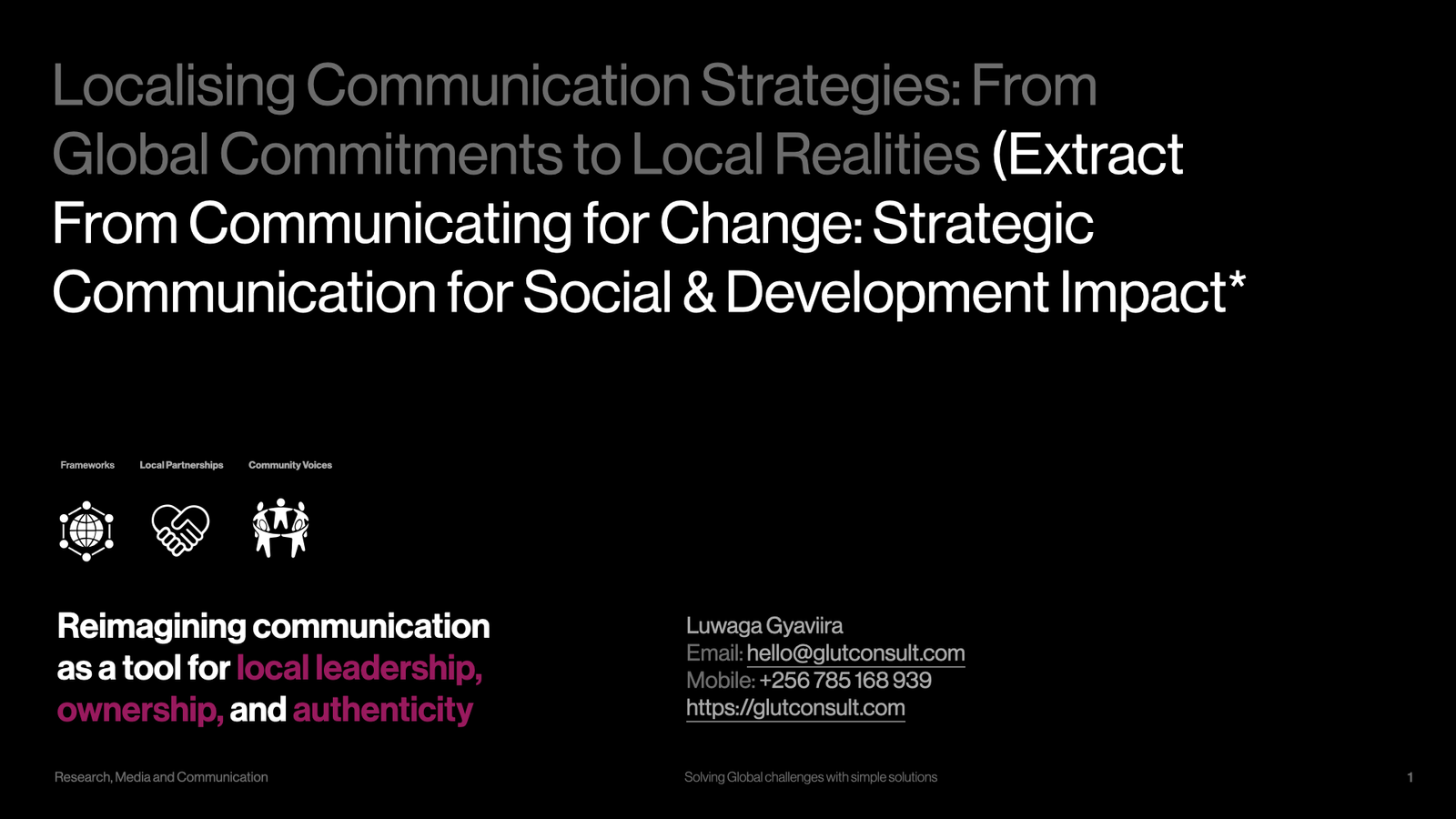The localisation agenda continues to redefine how we think about communication for social and development impact.
In today’s complex global landscape, meaningful communication is not just about message delivery — it’s about who shapes the message, who owns it, and whose realities it reflects.
This presentation, drawn from Chapter 14 of my book Communicating for Change: Strategic Communication for Social & Development Impact, explores how frameworks such as the Grand Bargain and the Global Refugee Forum (GRF)are transforming communication practice across humanitarian and development spaces.
It highlights the strategic and practical dimensions of localising communication — from rebalancing power and decision-making, to embedding local leadership and narrative ownership in every stage of the communication process.
Through case examples from The Gambia, Ukraine, and the International Federation of Red Cross and Red Crescent Societies (IFRC), the presentation illustrates how locally-led communication approaches are fostering authentic engagement, trust, and sustainability.
Over the next few days, I’ll also be sharing short reflections and excerpts from this chapter — designed to spark dialogue among communication and development practitioners on how we can move from global agendas to locally-driven strategies that empower communities and strengthen social impact.
You can view or download the presentation below and join the conversation on localisation, equity, and communication strategy design.
View Presentation:

Leave a Reply